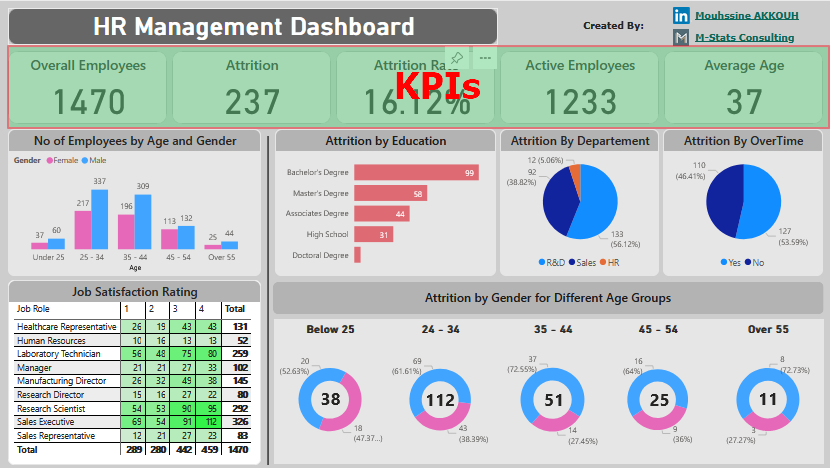

1. Key Performance Indicators (KPIs)
Track the organization's workforce health through fundamental KPIs.
- Overall Employees: Track the total number of employees in the organization.
- Attrition: Monitor the number of employees who have left the company.
- Attrition Rate: Understand the percentage of employees leaving relative to the total workforce.
- Active Employees: Gauge the number of currently employed staff.
- Average Age: Evaluate the average age of the workforce.



